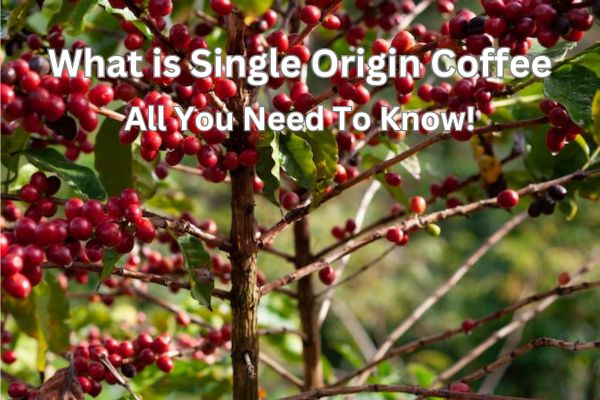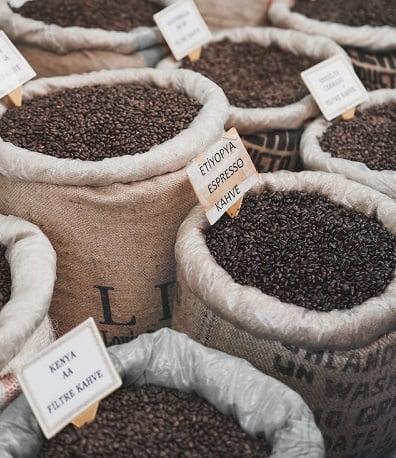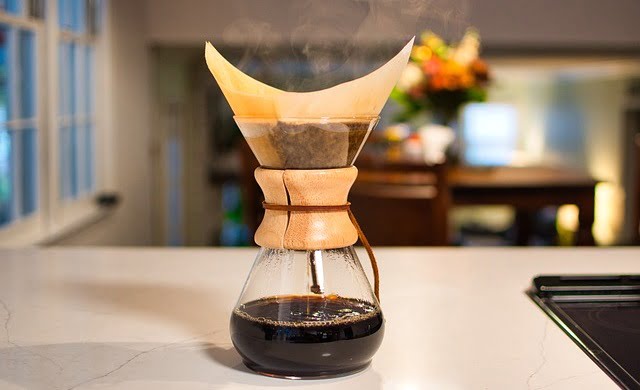Single-origin coffee is more than just a buzzword in the world of coffee. It refers to coffee that is sourced from one single place highlighting the complex flavor profile of that origin.
Key takeaways
- Single-origin coffee comes from one farm, region, or country to highlight unique flavors.
- Specific soils, climate, and processing shape distinctive flavor profiles
- Single origins showcase originality while blends offer consistency
- Best single origins like Blue Mountain or Kona offer exceptionally complex tastes
- Slow drip methods best showcase delicate single origin flavor notes

In this article, I draw upon my extensive experience in tasting and researching coffee origins to offer a concise introduction to single origin coffee, its distinguishing features, and the importance of understanding your coffee’s origins in pursuit of the perfect cup.
What is single origin coffee?
Single origin coffee refers to coffee beans sourced from a single location, often a specific farm or region. Unlike coffee blends that combine beans from multiple areas, single origin coffee highlights the unique flavors and qualities exclusive to that particular growing area.
The term “single-origin” in the coffee world is surprisingly nuanced, sparking debate among enthusiasts.
For some, it’s a geographical definition, requiring beans to hail from a single country or region.
For example, coffee could be labeled as Single origin Colombian or Single origin Ethiopian. Though sourced from one area, the beans may come from different farms across slightly varying terrain. Still, single origin gives a baseline flavor for that region’s coffee profile.
Others prioritize traceability, emphasizing the ability to pinpoint the exact farm or lot where the coffee grew.
This hyperlocal sourcing creates more consistency between beans as they are grown truly side by side in one location.
For example, the Los Planes estate in El Salvador produces coffee completely unique to just that farm based on its soil, altitude, and proprietary processing.
Finally, Micro Lots represent an ultra limited single origin coffee.
Sometimes just a couple bags harvested from specific rows of bushes or trees on a farm, these hyper-exclusive quantities showcase exotic flavor profiles specific literally to their microclimate within the farm.
Panama Geisha Lot 290 is an oft-cited example, yielding beans free from herbicides. Its standout trait lies in the natural sugars and delicate yellow peach notes, unmatched by coffees from elsewhere.

What’s special about single origin coffee?
One thing I love as a coffee fanatic is getting to taste all the unique and subtle flavors that single origin coffee has to offer.
When coffee comes from just one farm, region, or producer cooperative, you can really get a pure expression of that place in your cup.
The soils, the climate, the varieties grown, and how they are processed all impact the flavors you experience.
You’ll typically get brighter, fruiter notes or deeper earthy tones depending on the origin. Maybe some currant sweetness from a Colombian, rich chocolate from a Peruvian, or lemony acidity from a Tanzanian.
The cool thing is that even coffees from two farms right next door to each other in the same region can taste noticeably different based on slight environmental factors.
Now don’t get me wrong – not all single origins are necessarily “better” than your average Starbucks blend.
Some folks just want a smooth, well-balanced everyday coffee without any funky notes jumping out. And Coffee blends bring together beans to achieve that.
But for me as someone who wants coffee to be an experience, I love tasting those exotic flavors of a particular place that you can only get from a super specific single origin microlot crop.
The catch is that with only a set amount grown in limited geographical areas each harvest, the availability of particular single origin coffees can fluctuate.
If I develop a taste for yellow-peach-berry notes from La Palma y El Tucán in Columbia, getting that exact taste profile is not guaranteed throughout the year or even next year if weather impacts yields differently.
Of course, that scarcity and high demand for the best single origin micro lots can cost more than 5 times compared to average coffee beans

Is single origin coffee better than blend?
Single origins are not necessarily better than blend. Blends aim to achieve a reliable, consistent profile by combining beans of complementary flavors. Meanwhile, single origins showcase more originality – that distinct sweet berry note or rich chocolate vibe from a specialty coffee bean.
I see single origin and blended coffees as each bringing something different to the table.
So for those exploring wildly unique coffee experiences like me, you’ll probably dig chasing pure expressions from the newest harvest single origin finds each season.
Though for beginners or folks wanting reliably well-rounded daily cup after cup, quality blends can be the sensible way to go.
Which single origin coffee is best?
Here are some of my favorite highest-rated single-origin Coffee beans that I am sure you’ll love trying!
1. Ethiopian Yirgacheffe Coffee
Ethiopian Yirgacheffe coffee is like a fragrant garden in a cup.
These beans brew into a delicate, floral, tea-like cup with notes of citrus, green apple, and peach.
I love the smooth, clean body and bright, sweet fruit acidity that makes Yirgacheffe so refreshing to drink.
2. Indonesian Sumatra Coffee
I’m a huge fan of Sumatran coffee’s full body and rich, earthy flavor. The best Sumatra beans have notes of chocolate and spice with almost no acidity.
My favorite is Mandheling Sumatra from the west-central region. It brings an intense, syrupy feel, teasing taste buds with hints of chocolate sweetness and subtle spices.
A good Sumatra cup is very satisfying, with a complexity and intensity of flavor unmatched by other origins.
3. Hawaiian Kona coffee
The Kona Coffee beans offer cheerful brightness and well-balanced flavors.
Grown in Hawaii’s mineral-rich volcanic soil, these beans produce a medium-bodied, fragrant cup with delightful acidity.
The best Konas have subtle hints of spice and wine with a clean, lingering aftertaste.
4. Kenya AA Coffee
Kenya AA coffee, renowned for its exceptional qualities, owes its excellence to perfect growing conditions and precise processing methods.
Grown in the highlands between Mount Kenya and Nairobi, these beans thrive in volcanic soil, boasting a light body and a bright, floral taste kissed by tropical fruit and wine undertones.
The complex taste reminds me of hibiscus and black currant, with a lingering sweetness almost like sugarcane.
5. Jamaican Blue Mountain Coffee
From its first sweet, chocolaty aroma to the last velvety sip, Jamaican Blue Mountain coffee is a truly special experience.
Grown at high elevations on nutrient-rich volcanic soil, these rare beans produce a beautifully balanced, medium-bodied cup with floral notes and zero bitterness.
The creamy mouthfeel and mildly nutty flavor make Jamaican Blue Mountain Coffee, unlike any other origin I’ve tried.
It’s pricy, but this mellow, crowd-pleasing coffee is worth every penny!
Also read: Where’s the best Coffee grown in the World
The best way to enjoy single-origin coffee
When it comes to single origin coffee, I always recommend using a slow drip brew method to really let those unique origin flavors shine through.

I would never make Espresso with some rare Panamanian beans, it’s like wasting those expensive beans. The concentrated nature and fast extraction process in Espresso overshadow those delicate flavors, masking the unique taste notes that make each cup special.
And of course, single origin tastes best enjoyed black – no sugar, cream, or fancy flavors needed. Let the natural sweetness and complexity shine.
Also, Go lighter with single-origin! Deeper roasts can mask out those special flavors. Stick to light or medium roasts, that preserve the natural flavors of beans.
Read a guide on 14 different ways to make coffee
Final thoughts
There you have it – a quick tour of what makes single-origin coffee so special. From the intricate flavors that reflect the terroir to the connections with farmers we can foster, single origins offer a world of discovery for coffee lovers.
I’d love to hear about your own adventures with these site-specific beans! Have you tried any of the famous regions mentioned here? Which origins stand out as your all-time favorites? Share your tasting experiences in the comments!
Check out other articles related to Coffee beans:
- What is Arabica Coffee
- What is Robusta Coffee
- What is Third Wave Coffee
- Mushroom Coffee
- Natural Coffee vs Washed Coffee
- What is Fermented Coffee
- What is Honey Process Coffee
FAQs
Why is single origin more expensive?
Single origin coffee is expensive due to its exclusive sourcing, limited availability, and premium quality.
These beans are produced in smaller quantities and the unique terroir leads to more complex flavors that are highly sought after by specialty coffee drinkers.
What’s the world’s most expensive coffee?
The world’s most expensive coffees are Black Ivory from Thailand, Geisha from Panama, and Kopi Luwak from Indonesia, costing over $1000 per kilogram.
Black Ivory is made from coffee beans digested and defecated by elephants, while Kopi Luwak goes through the digestive system of the Asian palm civet. Both claim superior flavor and smoothness from this unorthodox processing by animals. The limited supply also drives up the astronomical prices.
Does Starbucks offer single-origin coffee?
Although Starbucks is well-known for its well-balanced blends, they do offer some single origin options like Guatemala Antigua, Kenya, Colombia, and Sumatra.
Is Single Origin Coffee Organic?
Single origin coffee is not necessarily organic. While some single origin coffees are certified organic, the term simply denotes that the beans come from one specific farm or region.
They can be grown organically or using conventional practices.
Check out guide on Organic Coffee vs Regular



